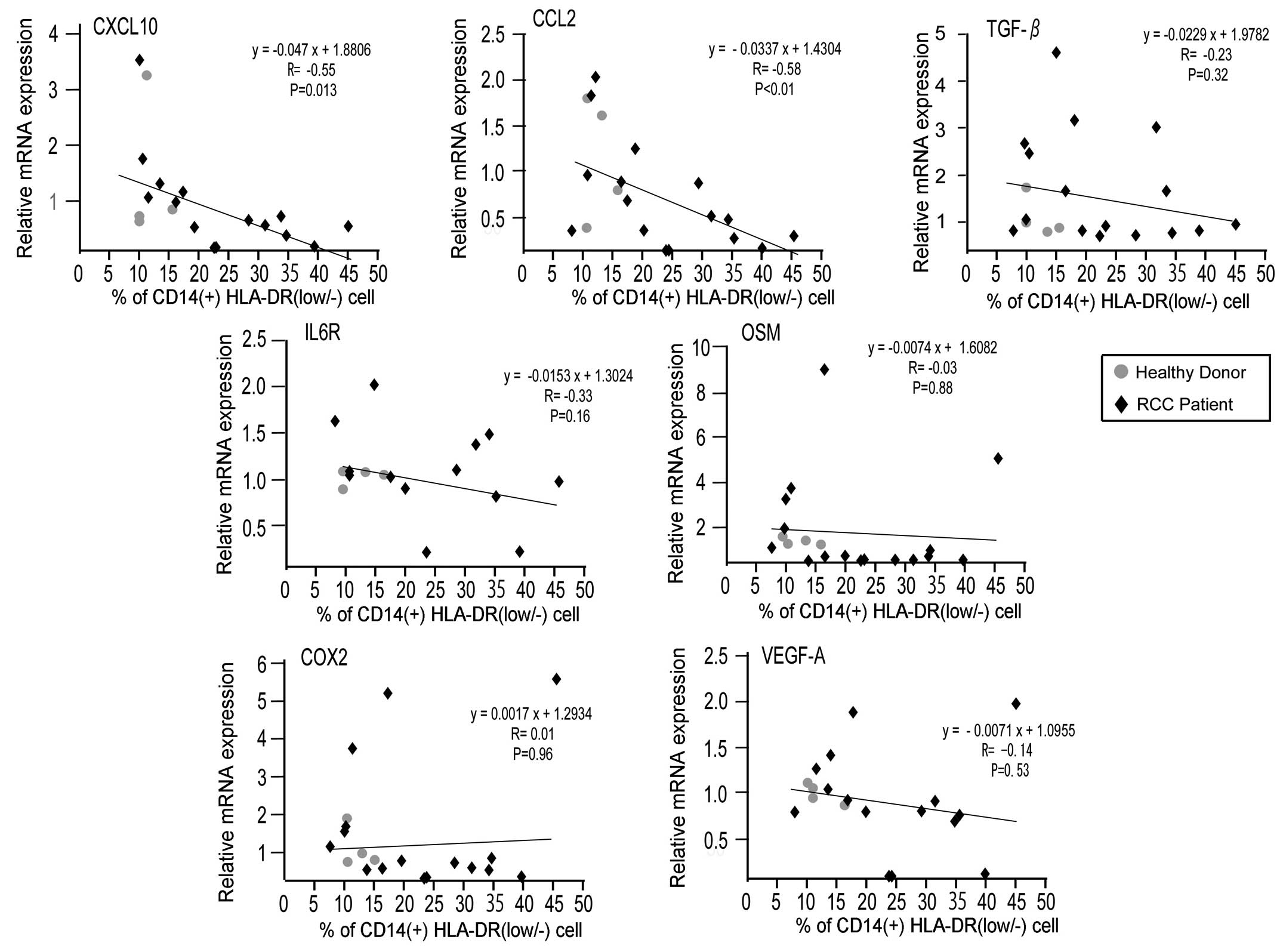CXCL10 and CCL2 mRNA expression in monocytes is inversely correlated with the HLA‑DR lower fraction of monocytes in patients with renal cell carcinoma
- Authors:
- Published online on: January 20, 2016 https://doi.org/10.3892/ol.2016.4132
- Pages: 1911-1916
Metrics: Total
Views: 0 (Spandidos Publications: | PMC Statistics: )
Total PDF Downloads: 0 (Spandidos Publications: | PMC Statistics: )
Abstract
Circulating cluster of differentiation (CD)14+ human leukocyte antigen (HLA)‑DRlow/‑ monocytes, those with a lower HLA‑DR expression or are negative for HLA‑DR, are considered to be involved in systemic immunosuppression in patients with several malignant tumors. However, few studies have investigated in detail the gene expression profile of CD14+HLA‑DRlow/‑ monocytes. In the present study, the mRNA expression levels of immune‑associated molecules in CD14+ monocytes isolated from healthy donors and patients with renal cell carcinoma (RCC) were analyzed. Consistent with previous studies, the percentage of HLA‑DRlow/‑ cells in CD14+ monocytes was significantly increased in patients with RCC compared with healthy donors. In 3 of the 4 patients who underwent surgical resection of the primary tumor, the percentage of CD14+HLA‑DRlow/‑ cells was significantly decreased following surgery. The mRNA expression levels of cyclooxygenase 2, transforming growth factor β, interleukin 6R, chemokine (C‑C motif) ligand 2 (CCL2), chemokine (C‑X‑C motif) ligand 10 (CXCL10), oncostatin M, and vascular endothelial growth factor‑A in CD14+ monocytes were quantified using reverse transcription‑quantitative polymerase chain reaction. The results of the present study revealed that increased expression levels of CCL2 and CXCL10 were inversely correlated with the percentage of CD14+HLA‑DRlow/‑ monocytes. This suggested that monocytes in RCC patients were immunologically suppressed, and that immunosuppression in RCC patients may be due, in part, to the dysfunction of circulating monocytes.











